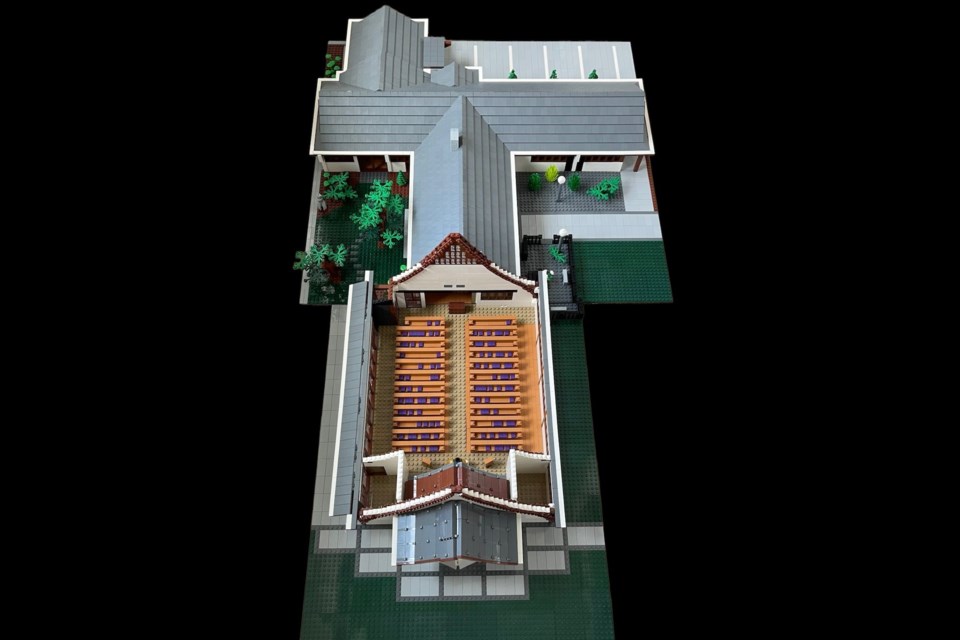It’s made up of about 9,600 pieces and has taken three years, on and off, to create it.
But Richmond’s “Lego Man,” AKA Peter Grant, couldn’t be more proud of one of his latest masterpieces, the Steveston Buddhist Temple.
Grant has been responsible over the last decade or so for recreating some of the city’s most iconic and historic buildings, using only the tiny bricks and pieces from the children’s favourite toy.
His works have included the likes of Branscombe House, Steveston Post Office and even Canada’s original McDonald’s at No. 3 Road and Granville Avenue.
Such is his attention to detail, Grant often has to source obscure Lego pieces from far flung corners of the globe, to ensure his creations are as close to the real thing as possible.
“The temple is almost 3’ by 5’. I may be displaying it at the actual temple on Dec. 11, but I’m still making those arrangements,” Grant told the Richmond News.
“I started the temple project in 2019 but couldn’t figure out the convex roof for the hall, so I abandoned it.
“I came across the pieces this summer and thought about using hinge plates and bricks for the roof, so I ordered some parts in July to prototype the roof and it seemed to work.
“It took about three months to complete and about 30 parts ordered from Canada, the US, and Europe.”
Steveston Tram and barn up next
Grant said he doesn’t often do the interior of his builds, but added that he “had to do the inside of the hall with the alter and the pews and so I needed to be able to remove the hall roof to appreciate it.”
Grant is also on the cusp of revealing yet another of the city’s historic treasures, the Steveston Tram and its barn, which he has done on request for the City of Richmond.
“The tram barn will be displaying a few of my buildings in their windows in December, including the stilt houses and the Chinese bunkhouse which haven’t been on public display yet,” said Grant.
“I was planning to do the Gulf of Georgia Cannery before I came across the parts for the temple. I may still do it next, but I may do a more modest project first, like the Ransford House on Railway.”


